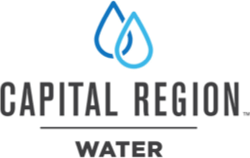The drinking water supplied by Capital Region Water exceeds all federal and state drinking water standards. The Water Quality Report is our way of giving our customers a transparent overview of the quality of water that we provide each year.
Included in this report are details about the source of your water and how it compares to federal and state regulatory standards. It is our commitment to provide crystal clear information to each of our customers. We are dedicated to protecting this water from raindrop to river!
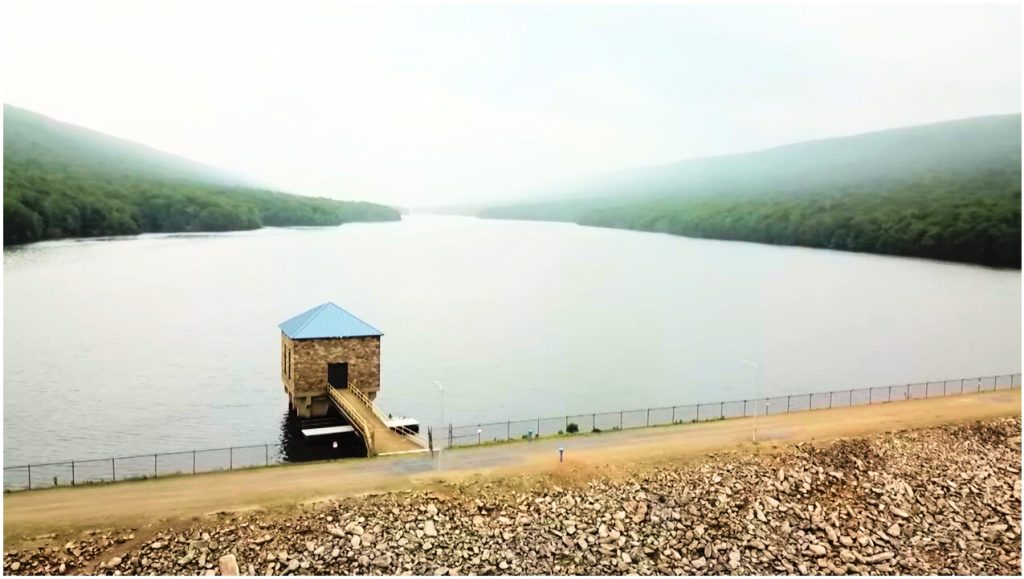
Consider the Source
The place where your drinking water comes from is called its source. Your primary source of drinking water comes from the DeHart Dam and Reservoir, located 20 miles northeast of Harrisburg in the pristine Clarks Valley.
A watershed is the area of land draining to the source. DeHart Reservoir is lucky to have its watershed made up almost entirely of forest; the best type of land use for drinking water.
Our secondary source is the Susquehanna River, which is utilized for a brief period each year to ensure resiliency in the case of severe drought or emergency. As part of Capital Region Water’s ongoing efforts to be proactive and ensure reliable service, Capital Region Water temporarily pumps and treats a blend of water from the Susquehanna River and DeHart for 10 days once a year to ensure its reliability during a potential emergency.
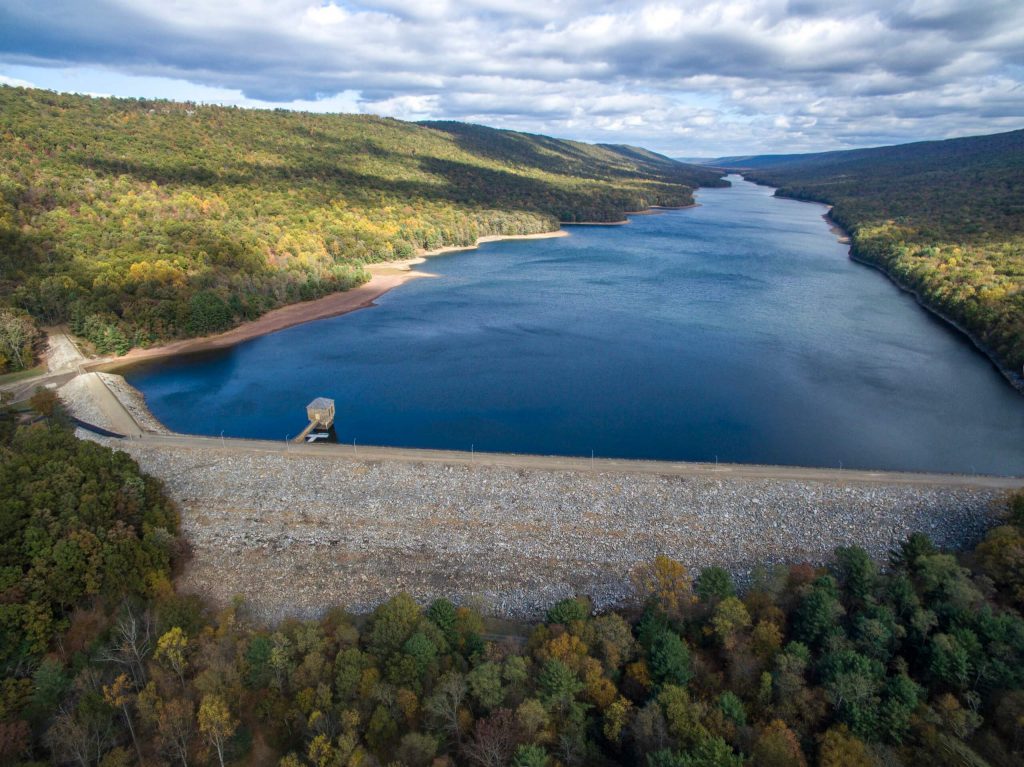
Protecting the Source
A Source Water Assessment of Capital Region Water’s sources was completed by the Pennsylvania Department of Environmental Protection (DEP) in 2003. The Assessment found that on lot septic systems and fuel oil storage facilities pose the greatest threat to the DeHart Dam Intake. Agriculture activities, gas stations, urban runoff, and the potential for spills from bridges crossing the river are the most significant potential sources of contamination to the Susquehanna River. A summary report is available by visiting the Source Water Assessment Summary Reports eLibrary at: www.elibrary.dep.state.pa.us/dsweb/View/Collection-10045.
A voluntary Source Water Protection Plan was completed by Capital Region Water and approved by DEP in 2015. This plan includes the inventory of potential sources of contaminants in the assessment area and identifies management options for best protecting our water sources. Capital Region Water has prioritized watershed protection and pollution prevention. Over the last few years, efforts have been made to permanently protect the DeHart Property and Capital Region Water’s primary source of water supply.
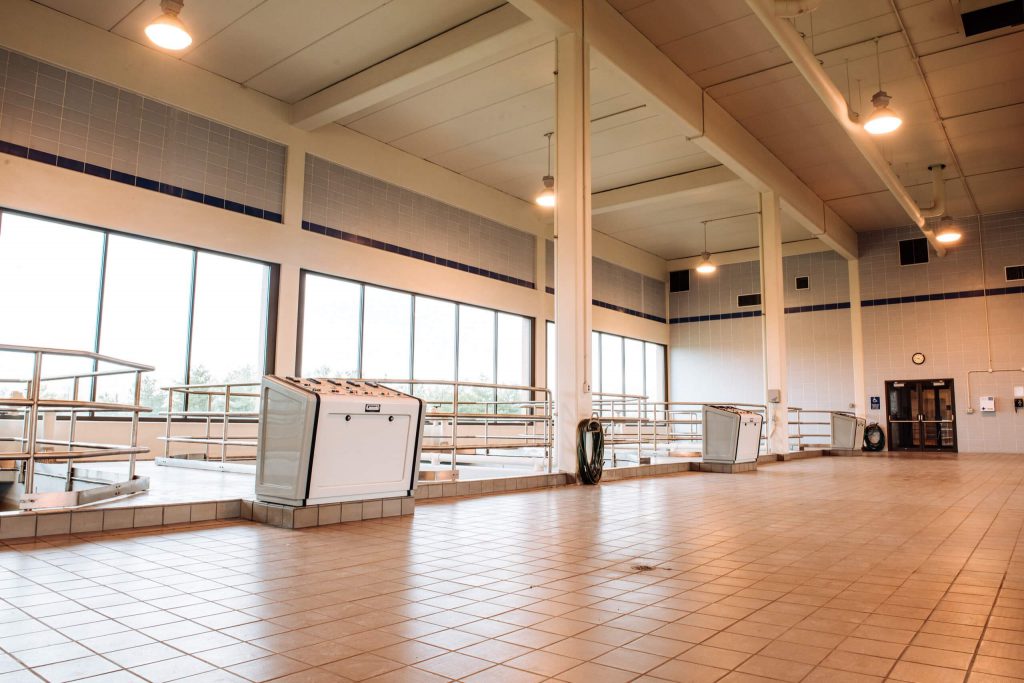
Drinking Water Treatment
The Water Services Center was built in 1994 and is capable of producing 20 million gallons of drinking water a day.
As raw water enters the treatment facility, an electric turbine uses water pressure and flow to create renewable electricity.
Next, a combination of soda ash, lime, caustic soda, chlorine (based on the season), and alum are added, causing small particles to adhere together. This coagulation process creates heavier particles that will settle in the sedimentation basins.
After sedimentation, chlorine is added for disinfection of bacteria and pathogenic organisms, those that can produce diseases. The water is then filtered to remove any remaining particulate matter.
After filtration, caustic soda and soda ash are added to adjust pH, and fluoride is added as a measure to prevent tooth decay.
Next, the water goes into the clearwell to allow contact time with chlorine. Zinc orthophosphate is then added to control corrosion in the distribution system and the treated water is pumped to three finished water storage reservoirs in Reservoir Park from which the potable water is gravity fed to your homes, businesses, and institutions
Drinking Water Treatment Process
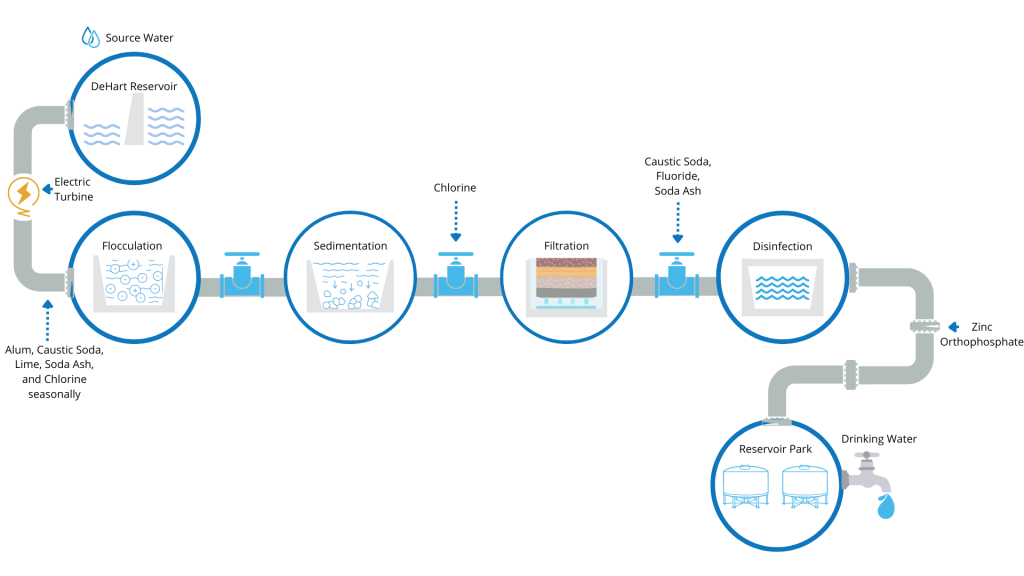
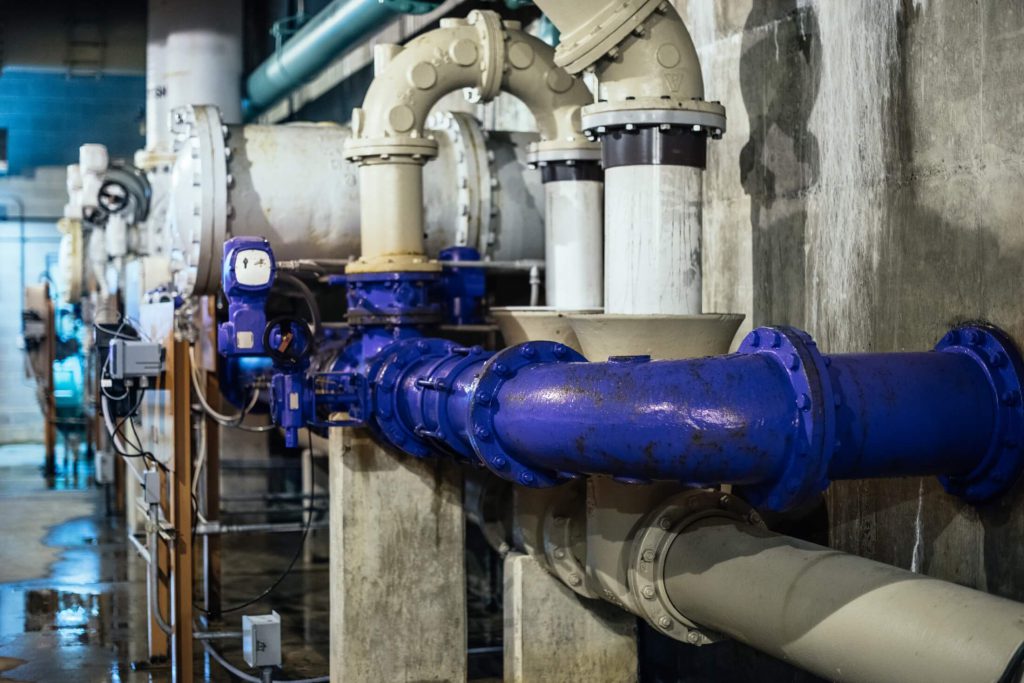
Drinking Water Distribution
Capital Region Water operates almost 230 miles of water mains that range from 6 inches to 42 inches in diameter and 1,800 fire hydrants. Please report issues with water mains and fire hydrants by calling 888-510-0606. This phone number is monitored 24 hours a day.
In 2022, Capital Region Water replaced 10,500 feet of water mains, repaired 17 main breaks, and repaired or replaced 56 fire hydrants to maintain reliable service.
Homeowners are responsible for the service line that runs between the main and their home. For more details on homeowner guidelines and line/lateral assistance, please visit the Customer Assistance Program page.
Drinking Water FAQs
If your water is rusty, yellowish, or brownish, the color is likely a result of iron, rust, or mineral build up. This may occur when there is an upset in the distribution system (such as a water main break) or when the direction of water flow changes (such as during hydrant use to extinguish a fire or during routine hydrant flushing). Discolored water may also result from internal plumbing issues. A rust problem is usually short-lived and we recommend that you do not wash clothes if you notice discolored water because the clothes may stain.
When water is cold, such as during the winter, there is more air in it. When the cold water enters your home, the water warms up and air is released from the water. The air in the water will give it a milky or cloudy appearance. When you open the faucet to fill a glass, the air is released as bubbles similar to what you see when shaking a soda. As the water sits in the glass, it will clear from the bottom of the glass to the top. The air is not harmful. The more air in the water, the longer it will take for the water to clear and more cloudy or milky it looks.
Bacteria grow well in these areas because they are moist and provide a food source for the bacteria to thrive on. The bacteria can be found in the air, in soil, in water, or on household surfaces. Orange and pink are common colors for many bacteria which can be a challenge to remove from these areas. Periodic and routine cleaning of these areas followed by disinfection with a chlorine-based cleaner is the best way to control it.
Black particles most often come from a water filter, a degraded faucet washer or gasket, or from a deteriorated flexible supply hose. If the particles look similar to coffee grounds, they are probably granular activated carbon from inside a water filter. This is easily fixed by replacing the filter cartridge. If the problem persists, consult with the manufacturer of the unit or a water systems professional to make sure a bigger problem is not to blame. If the particles are small black specks that look oily or sooty, they are probably from a black rubber flexible hose. Over time, the chlorine in the water breaks down the rubber. To fix this problem, simply replace the hose with one that has a protective lining.
If you notice a smell similar to rotten eggs (sulfur) or sewage when running water, it might be caused by gases residing in the sink drain. In the drain, bacteria live on food, soap, hair, etc. When water goes down a drain, these gases are released into the air. These odors are often mistakenly associated with the water because they are observed only when the water is running. In this case, the odor is not in the water, it is merely the water pushing the gas out of the drain. To resolve the drain odor, we recommend that you clean the drain.
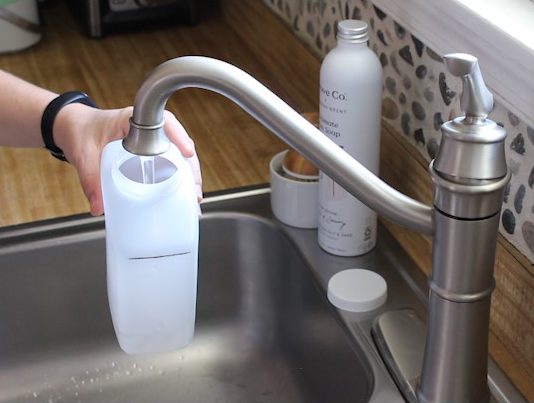
Lead & Copper Sampling
Following our mandated Lead and Copper Rule sampling plan, Capital Region Water recently completed Lead and Copper Rule sampling by testing 45 high-risk residential homes throughout our service area in 2022.
State and federal regulations require the 90th percentile lead level to be less than 15 parts per billion, meaning the lead level must not exceed this level in at least 90 percent of the homes sampled. Capital Region Water’s result was 0 parts per billion. Our next sampling schedule is slated for 2025.
More Safe Drinking Water resources are available at: http://www.epa.gov/safewater/lead
Lead & Copper FAQs
If present, elevated levels of lead can cause serious health problems, especially for pregnant women and young children. Lead in drinking water is primarily from materials and components associated with service lines and home plumbing. Capital Region Water is responsible for providing high quality drinking water, but cannot control the variety of materials used in household plumbing components.
Under strict state and federal regulations, Capital Region Water is required to test for copper and lead in its drinking water every three years. Samples for this testing are taken directly from customer faucets in areas with the oldest buildings, which are more likely to contain lead in their indoor plumbing. Based on Capital Region Water’s service area size, a minimum of 30 samples are collected for each testing period every three years.
Customers can contract with a local environmental testing lab or purchase in-home test kits at their local hardware store. Capital Region Water does not recommend or endorse any specific laboratory or in-home test kit.
Capital Region Water will be collecting samples this year between June and September as part of our regulatory requirements. Results will be distributed to customers via newsletter and CRW website, as well as the 2023 Water Quality Report.
Following its mandated Lead and Copper Rule sampling plan, Capital Region Water recently completed its required Lead and Copper Rule sampling plan by testing 45 high-risk residential homes throughout its service area in 2022.
State and federal regulations require the 90th percentile lead level to be less than 15 parts per billion, meaning the lead level must not exceed this level in at least 90 percent of the homes sampled. Capital Region Water’s result was 0 parts per billion. Capital Region Water will test for lead and copper again in 2025.
Lead is not present in the water Capital Region Water sends into the distribution system. Lead can enter the water when there is corrosion of lead joints on water mains or plumbing systems containing lead. To prevent the corrosion of pipes, Capital Region Water adjusts the pH of the water and adds a corrosion inhibitor to prevent corrosion of water mains and indoor plumbing.
When your water has been sitting for several hours, such as overnight, you can minimize the potential for lead exposure by flushing your tap for 30 seconds to 2 minutes before using water for drinking or cooking. If you are concerned about lead in your water, you may wish to have your water tested. Information on lead in drinking water, testing methods, and steps you can take to minimize exposure is available from the Safe Drinking Water Hotline:
(800-426-4791) or at: http://www.epa.gov/safewater/lead
Resources
<div class=”wp-block-file”><a id=”wp-block-file–media-ca326066-bd8d-43f3-b51f-00cb93220a36″ href=”https://capitalregionwater.com/wp-content/uploads/2023/06/FINAL_Web-ENG-2023-CCR2.pdf”>2023 Water Quality Report (English)</a><a href=”https://capitalregionwater.com/wp-content/uploads/2023/06/FINAL_Web-ENG-2023-CCR2.pdf” class=”wp-block-file__button wp-element-button” download aria-describedby=”wp-block-file–media-ca326066-bd8d-43f3-b51f-00cb93220a36″>Download</a></div>
<!– /wp:file –>
